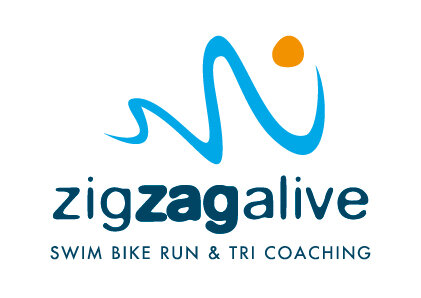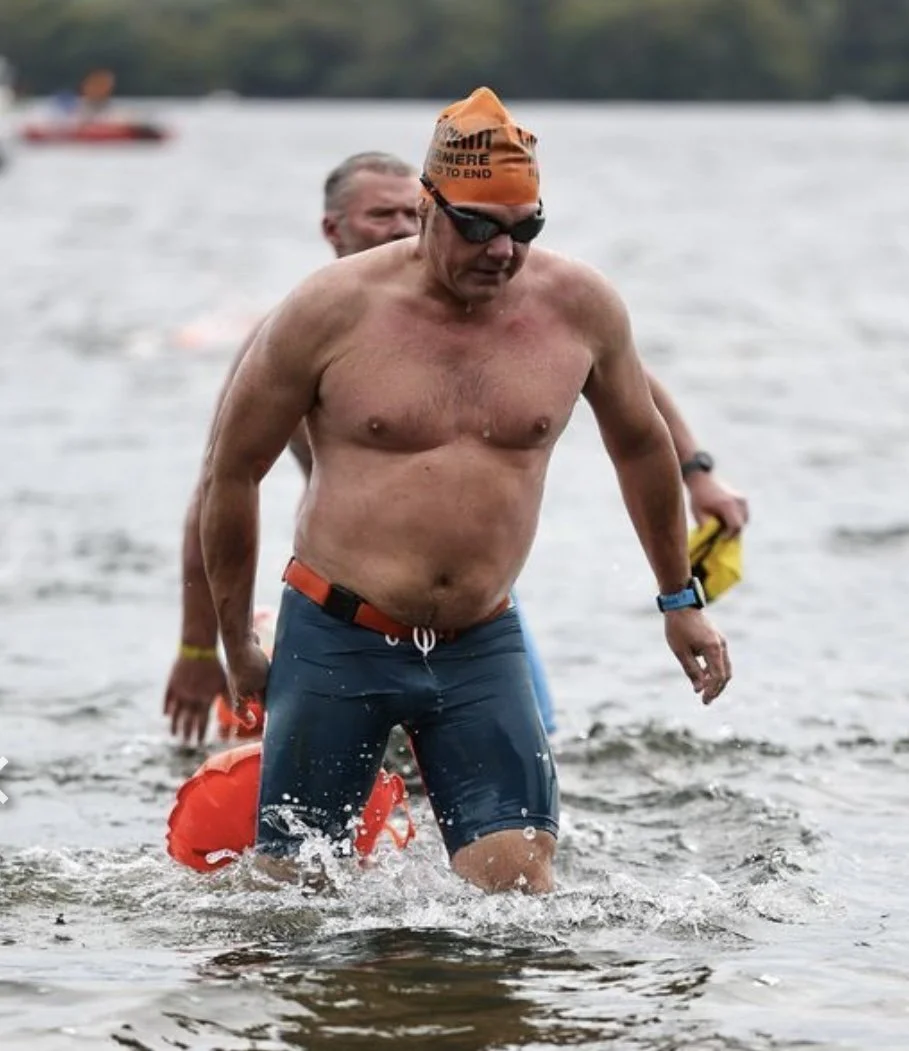the start of a big chill
Following a frustrated attempt to get a group together to swim from Corsica to Sardinia this summer I signed myself up instead to the Windermere swim – a similar distance of 17km and (not really thinking it through!) decided I needed the additional challenge of it being a skins swim too – having been a lifelong wetsuit swimmer until now.
I’m a reasonably experienced but non-competitive open water swimmer and realised pretty soon that this swim was considerably beyond my experience - and that I would benefit from a coach to help me in my preparation. After some research I was drawn to Mike after reading an article he wrote for the Outdoor Swimming Society. Mike talked about the philosophy of ‘moving the finish line to the start’ which suggests that by the time you've completed your training and arrived at the start line, you have already accomplished 99% of the journey. The actual race is the final step, but the most significant work has already been done. This really resonated with me as a really positive way to look at the challenge.
training starts
Coming to the event a bit late in the year and recognising there wouldn’t be time to gradually build up and practice the swim distance in training, Mike helped me re-frame my training and focus on a number of back-to-back swims in an attempt to replicate the fatigue I might experience on the day. We mixed this in with a number of different swimming locations, temperatures and conditions to hopefully prepare for what may come on the day, indeed – the advertised temperature range of 15-20 degrees remained a concern for me as I struggled to find that cooler water locally to acclimatise in.
Being an older swimmer, I was carrying the inevitable shoulder injury and had undergone surgery the year before to fix it – so flexibility and conditioning were really important to me, and I made a daily stretching exercise an essential part of my routine. I also found that in moving to skins swimming, my technique had to change and become more efficient, not having the buoyancy of a wetsuit made me slower but I came to really enjoy feeling the water more and started caring less about my speed.
A bigger swim seemed to call for a bit of a strategy and I was able to build on contacts made on an UltraSwim 33.3 event from 2024 to pull together a nutrition plan, the team from Precision Hydration helped with a free consultation to prepare one (I bought some of their products which are easy on the stomach) and I stuck to it pretty closely on the day, feeding every 30 mins/ 1 mile. I also took time to practice feeding – as dumb as that may sound – but was glad to have done so and ended up trying a couple of different tow-floats to hold my supplies before settling on one that didn’t keep turning upside down creating drag or fill with water!
a blended story
During my preparation for the race, I also reflected on my own coaching journey. As a recently qualified open water coach, I really enjoyed expanding my professional knowledge toolkit and reflected on how I might be able to share some of what I was learning with my future students.
As I write now, I’m not quite sure how I should continue with this article – should it be ‘top tips’ or a just a good story (the importance of which you will certainly hear Mike advocate for) perhaps I’ll do a blend of both…
The summer months ahead of the swim passed quickly, each week there was a check in with Mike to keep me honest, utilizing the Xhale app to track my training – not only focussing on the distance but just as importantly ensuring good rest and recovery.
It’s fair to say that life got in the way of things too – work, family commitments and summer holidays all disrupted ‘the plan’ but we adapted and made the best of it – getting in swims where possible in the hotel pool or in the sea with my wife on a rental kayak doing safety cover to stop me getting run over by jet skis!
Over the course of the summer I also started to become a bit too focussed on what my Garmin was telling me like: ‘you haven’t slept well, you may be tired and irritable today’ which became quite a distraction until I came to realise it is just a tool, it isn’t always right and it was more important to reflect on how you actually feel. Like all ‘advice’ you should take the bits that work for you and blend them into your wider plan.
here we go
Fast forward to the days ahead of the swim. It’s fair to say I didn’t feel as prepared as I wanted to. I hadn’t banked as much swimming distance as I had hoped, and I felt that my last weeks were more taper than training. I tried to focus instead on what I had done – trained for good mobility, practiced a nutrition plan and made better mental preparation in terms of developing strategies for coping with possible problems I may encounter on the swim.
In terms of goals, mainly I just wanted to get through it and enjoy the experience, based on my distance/km I figured I should take about 6 and a half hours, but secretly hoped that it would be closer 6. My longest ever swim before this had been 3 and a half hours so this was yet another ‘known unknown’ to manage.
I travelled up to Windermere the night before, carb loaded with an enormous pizza and registered early to try and minimise stress on the race day, I also negotiated an early breakfast of porridge and scrambled eggs on toast and with the hotel which, with some strong coffee, saw me well fuelled for start. Then followed a bus to the start where I fell in with some other skins swimmers and our chatting helped take my mind off the fact that I was still really not sure how I would feel when I got in the water or how I would cope with the distance or temperature.
It wasn’t too bad! I kept clear of the pack as I always do and swam my own swim. As much as folk talk about drafting I hate swimming on someone’s feet and would rather be in my own water even though it may be a bit tougher/ slower. I stuck to my plan – focussing on the well-marked half and one mile marker boys and the feeds that I would have at each mile. I deliberately didn’t look at my watch during the event instead just focussing on how I felt, when things got tough, I focussed on my stroke technique – keeping relaxed on the recovery and feeling the sensation of that tiny moment of ‘rest’ on my shoulders. Conditions were variable in the lake, and a sustained phase of strong following wind and choppy waves definitely threw in some challenges at about mile 7.
And before I knew it mile 9 turned into mile 10 and the end was in sight – I’m still not sure if the buoys were set out right as the last mile seemed to take just a few minutes! Indeed, looking back on the whole event, I seemed to go into some kind of odd parallel time reality, I really did not have much of a sense of time during the swim and it certainly did not feel that I was going for 6 hours which was a blessing.
At the end I received my medal, grabbed my warm kit that had been transported to the finish line from the drop at the start and enjoyed the warm drinks and flapjack on offer; then a short walk to the bus where I got to chatting to a South African lady about (of course) our favourite swims. Inevitably more got added to both of our bucket lists in the short time it took to get back to Event HQ.
Slight footnote:
When the results were published, I was pretty surprised to learn that I had come third in my category/ age group and in the top 25% for all the skins swimmers – so all the preparation had clearly worked reasonably well . A good foundation to return to my plan for Corsica to Sardinia…. 2026 or bust!


